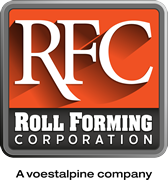Finite Element Analysis (FEA) is a mathematical modeling method, first developed over 60 years ago, that is used to calculate how a particular material or product will behave under different situations and stresses throughout a given process. Today, FEA is a computer-driven tool used by engineers to conduct virtual research and development evaluations to test new product designs or to refine existing product specifications before prototype production—allowing engineers to more cost-effectively manage product design, development, and fabrication.
FEA breaks down the composition of a material or product into a complex array of multiple points known as nodes (data is entered into the FEA program by the engineer). Each node represents properties found within the physical materials, and together, the collection of nodes forms a “mesh.” The mesh creates a template to render 2D or 3D models of the object being evaluated. Once constructed, the mesh of nodes can be subjected to different variables that are entered into the program to replicate real-world conditions. For example, an FEA model for fabricating a metal part could show design and production engineers how the part will behave during production; giving them a view of potential problems or process flaws before moving forward with tooling or prototyping. Experienced engineers can also use FEA to extrapolate material or part design issues by examining models of finished parts.
FEA in Roll Forming
Because roll forming is a multi-step process in which each roll performs a different part of the operation, FEA modeling is especially useful. In the hands of experienced roll-form engineers, FEA can remove up to eight tool iterations during product development and weeks from manufacturing lead times. FEA essentially creates a virtual roll forming mill that engineers can use to carefully examine every part of the process—from each individual set of rolls to every potential product deformity that roll or material flaws might cause. Armed with this valuable information, the experienced engineer can make adjustments to ensure the best possible part quality for each application.

